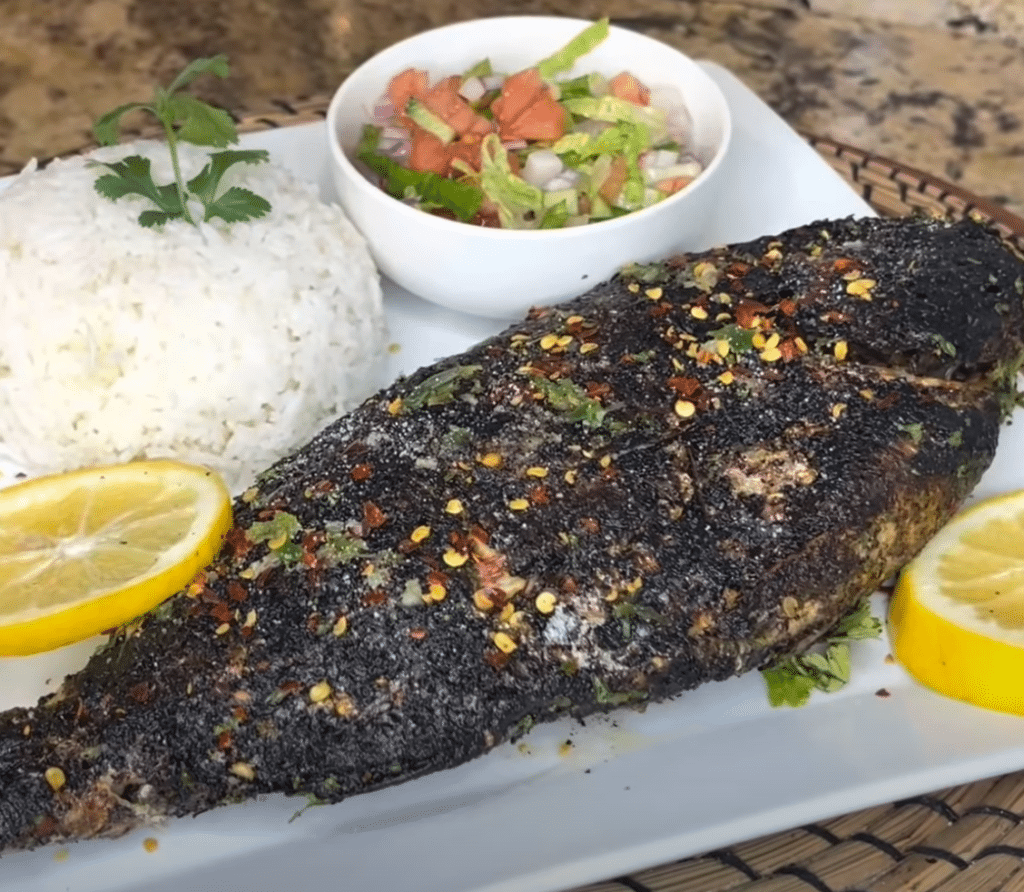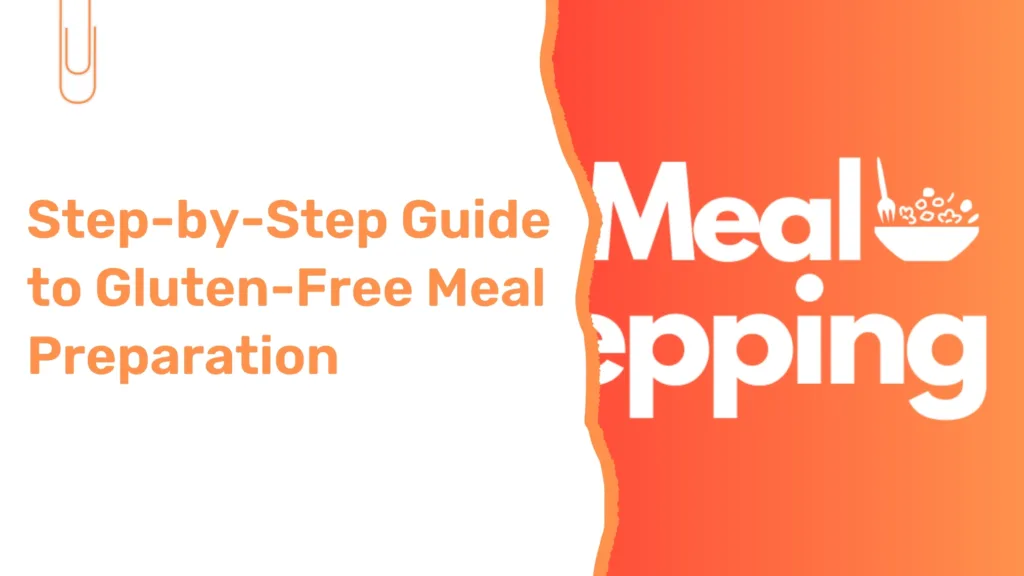Introduction
Adopting a gluten-free diet is essential for individuals with celiac disease or gluten sensitivity, impacting their health and well-being. Gluten, a protein found in wheat, barley, and rye, can trigger serious autoimmune responses in susceptible individuals.
The growing awareness of these conditions has led to an increased availability of gluten-free diet options and resources. Meal preparation is crucial in managing a gluten-free diet effectively, ensuring that foods are safe from gluten contamination and that nutritional needs are met consistently.
Proper meal planning can significantly reduce the daily stress of finding suitable meals, making a gluten-free lifestyle more sustainable and enjoyable. This guide aims to provide practical advice on gluten-free meal preparation, from essential ingredients to avoid, to crafting delicious, safe meals that support a healthy diet.
Understanding Gluten-Free Diets
A gluten-free diet excludes the protein gluten, found in grains such as wheat, barley, rye, and triticale (a cross between wheat and rye). This diet is not only a lifestyle choice for some but a necessity for those with celiac disease, gluten sensitivity, or wheat allergy. In celiac disease, gluten triggers an immune response that damages the lining of the small intestine, leading to malabsorption of nutrients and a wide range of complications from nutritional deficiencies, osteoporosis, to neurological conditions.
Understanding which foods are naturally gluten-free is crucial. Fresh fruits and vegetables, meat, poultry, fish, most dairy products, and gluten-free grains like rice, corn, soy, and potatoes are safe. However, any processed foods can be risky due to potential cross-contamination or hidden gluten in additives like malt flavoring, modified food starch, and certain preservatives and stabilizers.
Label reading is an essential skill for maintaining a gluten-free diet. Foods labeled “gluten-free” must meet regulatory standards which typically require that foods contain less than 20 parts per million of gluten. Nevertheless, it’s advisable to look for products certified by reliable entities that test products for gluten. You can explore more about this topic by visiting the page on gluten-free meal prep: Gluten-Free Meal Prep.
Cross-contamination is a significant concern, especially when dining out or using shared kitchen facilities. Precautions such as using separate cooking tools and storage areas can help mitigate this risk.
Adopting a gluten-free diet requires education and adaptation to manage effectively. It involves not just eliminating certain foods, but also compensating for potential nutritional deficiencies by choosing alternatives that offer equivalent nutritional value. For those diagnosed with celiac disease, following a strict gluten-free diet is the only known way to manage their condition and prevent the complications associated with gluten intake.
For comprehensive resources and support on managing celiac disease through diet, the Celiac Disease Foundation offers a wealth of information Celiac Disease Foundation for further resources.
Benefits of Meal Prepping for a Gluten-Free Diet

Meal prepping is particularly advantageous for those on a gluten-free diet. This practice simplifies the daily routine, ensuring safe and suitable meals are always on hand, which is crucial for those with celiac disease or gluten sensitivity, where dietary compliance is non-negotiable.
One significant benefit is the reduced risk of cross-contamination. Preparing meals in bulk at home allows for complete control over the cooking environment and the ingredients used. This is especially important in kitchens where non-gluten-free foods are also prepared. Using separate utensils, storage containers, and preparation areas during the meal prep process minimizes the chances of accidental gluten exposure.
Moreover, meal prepping helps maintain nutritional balance. Gluten-free diets can lead to deficiencies in fiber, iron, and B vitamins due to the exclusion of traditional cereals and breads. Planning meals can help ensure that each dish is not only gluten-free but also nutritionally complete, incorporating a variety of gluten-free grains and fortified ingredients to meet dietary needs.
Additionally, meal prepping saves time and reduces stress. Having ready-to-eat meals eliminates the daily hassle of finding gluten-free options, making it easier to stick to a gluten-free regimen without feeling restricted or inconvenienced. This can be particularly liberating for busy individuals, allowing them to enjoy nutritious, homemade meals without the constant worry about dietary restrictions.
Essential Gluten-Free Ingredients and Substitutes
Having a well-stocked pantry with suitable ingredients and substitutes is crucial. This ensures that meals are not only safe to eat but also nutritious and enjoyable. Here are some key gluten-free staples and their substitutes that can help diversify the diet without compromising on taste or texture.
Grains: Replace traditional wheat, barley, and rye with gluten-free grains such as quinoa, rice, corn, millet, and buckwheat. These grains can serve as the base for a variety of dishes, from breakfast cereals to hearty dinners.
Flour Substitutes: Gluten-free flour options are vital for baking and cooking. Blends made from rice flour, potato starch, tapioca flour, and almond flour can substitute wheat flour in recipes. Each flour has unique properties; for instance, coconut flour is highly absorbent and requires additional liquid, while almond flour adds a rich, nutty taste to baked goods.
Pasta and Noodles: There are numerous gluten-free pasta varieties available made from rice, corn, quinoa, or legumes. These alternatives offer the pasta experience without gluten and often provide additional nutrients like fiber and protein.
Bread and Cereals: Look for breads that are specifically labeled gluten-free. Many brands now offer options that mimic the texture and flavor of traditional wheat bread. Similarly, gluten-free cereals made from corn, rice, or gluten-free oats are excellent breakfast options.
Sauces and Condiments: Many sauces and condiments traditionally contain gluten as a thickener or filler. Opt for versions labeled gluten-free or make homemade sauces using gluten-free ingredients like tamari instead of soy sauce, which often contains wheat.
Snacks: Replace regular cookies, crackers, and other snacks with gluten-free alternatives available in most supermarkets. Alternatively, focus on naturally gluten-free snacks like fruits, nuts, yogurt, and cheese.
Baking Additives: Xanthan gum or guar gum can replace gluten’s elasticity in baking recipes, which is crucial for textures in cakes and bread.
Step-by-Step Guide to Gluten-Free Meal Preparation

Preparing gluten-free meals requires careful planning and attention to detail to avoid cross-contamination and ensure nutritional balance. Here’s a comprehensive step-by-step guide to help you navigate the process efficiently.
Plan Your Meals
- Begin by planning your weekly menu. Choose a variety of dishes that include different sources of protein, gluten-free grains, and plenty of fruits and vegetables to ensure a balanced diet.
- Create a shopping list based on your meal plan. This helps avoid impulse buys that may not be gluten-free.
Read Labels Carefully
- When shopping, read labels meticulously. Look for the gluten-free certification or the specific mention of “gluten-free” on packaging. Be wary of hidden sources of gluten in products like sauces, dressings, and condiments.
Prepare Your Kitchen
- Clean your kitchen thoroughly before starting to prepare gluten-free meals. This includes wiping down surfaces, cleaning ovens and microwaves, and washing utensils and cookware that might have been in contact with gluten-containing foods.
- Designate certain appliances and utensils (like toasters, cutting boards, and colanders) for gluten-free use only to avoid cross-contamination.
Cooking
- Start with fresh ingredients that are naturally gluten-free such as meats, vegetables, and dairy products. Utilize gluten-free grains like quinoa or rice as bases for meals.
- When cooking, use separate oils and condiments that haven’t been used with gluten-containing foods. For example, always use a clean spoon to scoop condiments.
Storage
- Store gluten-free meals in separate, clearly labeled containers. This is crucial if you share your kitchen with others who eat gluten-containing foods.
- Consider using color-coded containers or labels to distinguish gluten-free foods easily in a shared refrigerator or pantry.
Serving
- When serving, continue to use clean utensils and serving dishes to maintain a gluten-free environment.
- Educate family members or roommates about the importance of not mixing gluten-free utensils with others.
Dining Out
- When eating out, choose restaurants that are known for handling gluten-free meals safely. Communicate your dietary restrictions clearly to the staff.
- Consider carrying a chef card that details your gluten-free requirements, which can be handed to the kitchen staff to avoid any confusion.
By following these steps, individuals on a gluten-free diet can prepare safe and nutritious meals without fear of contamination. Regularly updating your knowledge about gluten-free products and cross-contamination methods is also beneficial to maintain a safe gluten-free lifestyle.
Meal Planning Strategies
Effective meal planning is a cornerstone for maintaining a consistent and enjoyable gluten-free diet. It not only ensures that meals are safe and healthy but also helps to manage time and reduce food waste. Here are key strategies to enhance your gluten-free meal planning:
1. Set a Schedule: Decide on a weekly meal planning day, typically a day before your grocery shopping. Use this time to review the upcoming week’s schedule, noting any events that might affect your meal needs, such as dinners out or late meetings.
2. Diversify Your Menu: To avoid dietary monotony, incorporate a variety of gluten-free grains like quinoa, buckwheat, and amaranth into your meals. Plan different protein sources throughout the week—such as beans, fish, and lean meats—to keep meals interesting and nutritionally balanced.
3. Batch Cooking and Freezing: Prepare large batches of gluten-free staples like grains, legumes, and sauces, and store them in the freezer. This approach saves time during busy weekdays and provides quick, easy options for building meals.
4. Use Themed Nights: Assign themes to different nights of the week, like “Taco Tuesday” or “Stir-Fry Friday.” This not only simplifies decision-making but also introduces fun and variety into your meal plans.
5. Leverage Technology: Utilize meal planning apps and tools designed for gluten-free diets. These can help track your meals, generate shopping lists, and even provide recipe suggestions based on the ingredients you already have.
6. Prep Snacks: Prepare healthy, gluten-free snacks in advance to curb between-meal hunger without resorting to potentially unsafe options. Fresh fruits, nuts, and homemade gluten-free granola bars are excellent choices.
Recipes and Meal Ideas
Creating a variety of gluten-free meals can be both enjoyable and straightforward with the right recipes. Here are some meal ideas that cater to different times of the day and can easily fit into your weekly meal prep routine.
Breakfast: Gluten-Free Oatmeal Pancakes
- Start your day with pancakes made from gluten-free oats. Blend the oats into flour, and mix with baking powder, a pinch of salt, eggs, and milk of your choice for a hearty breakfast. Serve with fresh berries and maple syrup for added sweetness.
Lunch: Quinoa Salad with Roasted Vegetables
- For a nutritious lunch, toss cooked quinoa with a selection of roasted vegetables like bell peppers, zucchini, and cherry tomatoes. Add a dressing of olive oil, lemon juice, salt, and pepper. This salad is rich in protein and fiber, making it a fulfilling midday meal.
Dinner: Baked Lemon Pepper Chicken
- Marinate chicken breasts in lemon zest, lemon juice, olive oil, and cracked black pepper, then bake until juicy and tender. Serve with steamed broccoli and a side of garlic mashed cauliflower for a satisfying dinner.
Snack: Homemade Hummus with Veggie Sticks
- Blend chickpeas, tahini, garlic, lemon juice, and olive oil to make a smooth, creamy hummus. This makes a great snack when paired with sticks of carrot, celery, and cucumber.
Dessert: Flourless Chocolate Cake
- For a decadent treat, make a flourless chocolate cake using eggs, high-quality cocoa powder, and dark chocolate. This rich cake satisfies sweet cravings and is perfect for those special occasions.
These recipes provide a good mix of nutrients and flavors, ensuring that your gluten-free diet remains diverse and enjoyable. Whether you’re cooking for one or meal prepping for the week, these ideas can be adjusted to suit any dietary needs and preferences.
FAQs
What does it mean for a food to be labeled “gluten-free”?
A food labeled “gluten-free” must meet regulatory standards, which generally require the product to contain less than 20 parts per million of gluten. This ensures safety for those with celiac disease or gluten sensitivity.
How can I ensure my kitchen is safe for gluten-free cooking?
To prevent cross-contamination, use separate utensils, cookware, and storage containers for gluten-free foods. Regularly clean all surfaces and appliances, and consider having dedicated gluten-free zones in your kitchen.
Can I eat out safely on a gluten-free diet?
Yes, but it requires caution. Choose restaurants that offer gluten-free menus and are knowledgeable about cross-contamination. Always inform the staff of your dietary restrictions before ordering.
Are oats gluten-free?
Pure oats are gluten-free, but they are often contaminated with gluten during processing. Look for oats specifically labeled as gluten-free to ensure they have not been contaminated.
What are some hidden sources of gluten in foods?
Gluten can be hidden in products like sauces, dressings, soups, and processed meats. It’s essential to read labels carefully and look for ingredients like malt flavoring, modified food starch, and certain thickeners, which can contain gluten.
Conclusion
Adopting and maintaining a gluten-free diet, whether due to celiac disease, gluten sensitivity, or personal choice, requires careful planning and mindfulness. This guide has outlined key aspects of gluten-free meal preparation, from selecting safe ingredients to effective meal planning strategies.
By embracing these practices, you can ensure a diverse, nutritious, and enjoyable diet that supports your health goals. Remember, the key to successful gluten-free living is vigilance and education, ensuring that every meal not only nourishes but also protects your well-being.

